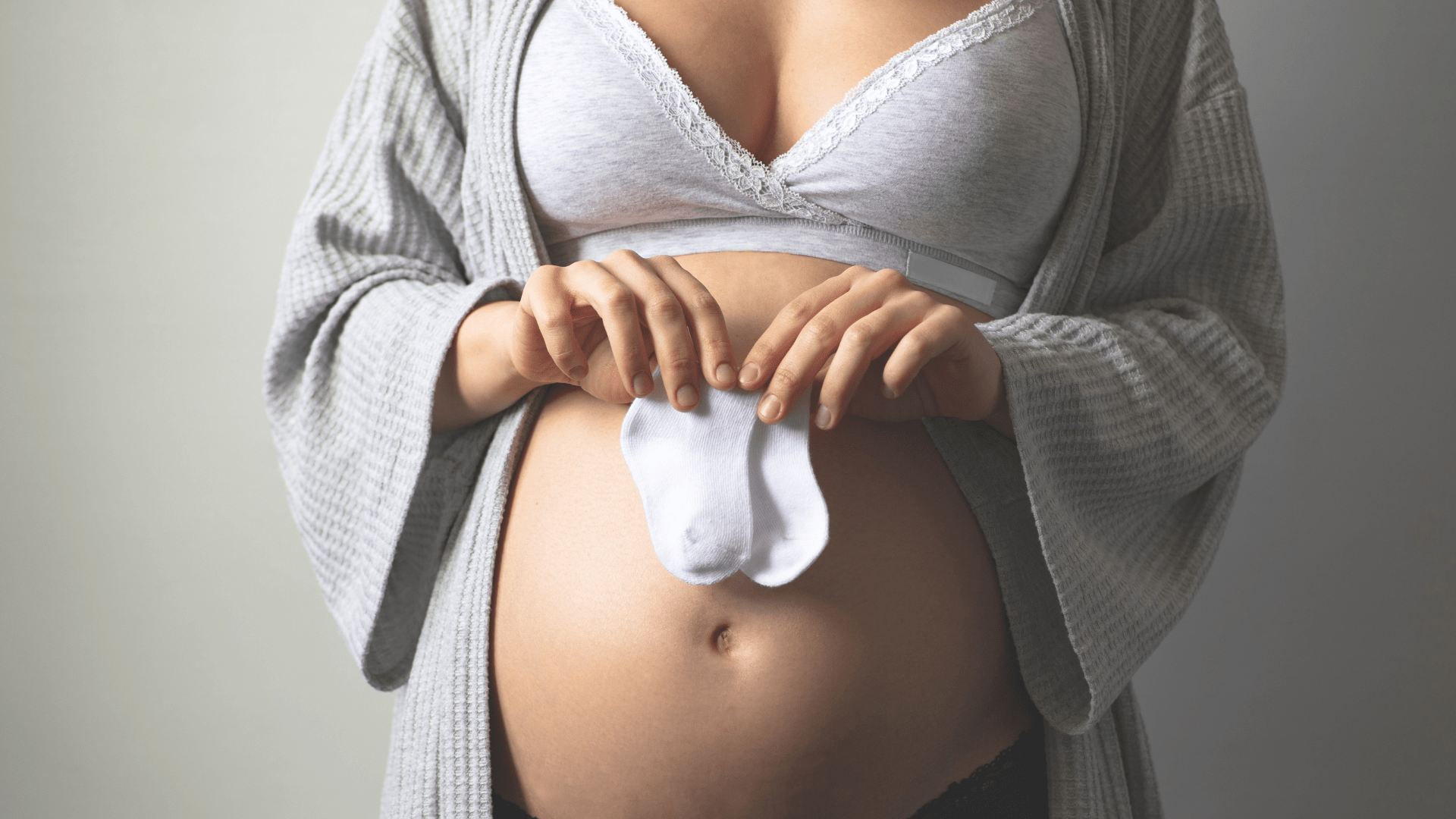The second trimester of pregnancy is between week 14 and the end of week 27. It is often considered the most enjoyable phase of pregnancy for many individuals. You will likely experience significant changes in your body and emotions during this time.
During the second trimester of pregnancy, you can expect various physical changes and symptoms. Here’s what you may experience:
- Growing belly and breasts: Your uterus expands to accommodate the growing baby, resulting in a visibly larger belly. Your breasts will also continue to increase in size. It’s important to wear a supportive bra with wide straps or a sports bra for comfort.
- Braxton Hicks contractions: You might feel mild, irregular contractions known as Braxton Hicks contractions. They usually feel like a slight tightening of the abdomen. These contractions are common and typically not a cause for concern. However, if they become regular and increase in strength, it’s advisable to contact your healthcare provider as it could be a sign of preterm labor.
- Skin changes: Hormonal changes during pregnancy can increase pigment-bearing cells in your skin, resulting in skin changes. You may notice brown patches on your face (melasma) and a dark line down your abdomen (linea nigra). These changes are usually temporary and fade after delivery. Additionally, you may develop stretch marks on your abdomen, breasts, buttocks, or thighs. While stretch marks cannot be prevented, they often fade over time (Be wary of ointments or stretch mark cleansers used).
- Nasal problems: Pregnancy hormones and increased blood flow can cause your mucous membranes to swell, leading to stuffiness and nosebleeds. Using saline drops or a saline rinse can help relieve congestion. Staying hydrated, using a humidifier, and applying petroleum jelly around the edges of your nostrils can also provide relief.
- Dental issues: Pregnancy can make your gums more sensitive, resulting in minor bleeding while brushing or flossing. Rinsing with saltwater and using a softer toothbrush can reduce irritation. Frequent vomiting during pregnancy can also affect tooth enamel and increase the risk of cavities, so it’s important to maintain good dental hygiene.
- Dizziness: Changes in circulation during pregnancy can cause dizziness. Drink plenty of fluids to minimize dizziness, avoid standing for prolonged periods, and be cautious when changing positions. If you feel dizzy, lying down on your side can help.
- Leg cramps: Leg cramps are common during pregnancy, particularly at night. Stretching your calf muscles before bed, staying physically active, and staying hydrated can help prevent leg cramps. Wearing comfortable and supportive shoes is also beneficial. If a leg cramp occurs, stretching the calf muscle, taking a hot shower, having a warm bath, or using an ice massage may provide relief.
- Vaginal discharge: It is normal to experience a sticky, clear, or white vaginal discharge during pregnancy. However, if the discharge becomes strong-smelling, changes color, or is accompanied by pain, soreness, or itching, it could indicate a vaginal infection, and you should contact your healthcare provider for further assistance.
- Urinary tract infections (UTIs): UTIs are common during pregnancy. If you experience a strong urge to urinate that cannot be delayed, sharp pain during urination, cloudy or strong-smelling urine, fever, or backache, it could be a sign of a UTI. Prompt medical attention is necessary, as untreated UTIs can lead to kidney infections.

During the second trimester of pregnancy, your baby undergoes significant development and reaches several important milestones. Here are the key developments that occur during this period:
- Growth and physical changes: The fetus grows rapidly during the second trimester. By the end of this trimester, it will be about 14 inches long and weigh around 2-3 pounds. The baby’s facial features become more defined, including eyebrows, eyelashes, and hair formation. Nails also start to form on the fingers and toes.
- Organ development: Most of the baby’s organs are fully formed and continue to mature during the second trimester. The lungs develop further, and the baby practices breathing movements by inhaling and exhaling amniotic fluid. The digestive system becomes more functional, and the liver begins to produce bile. The kidneys continue to produce urine, which is released into the amniotic fluid.
- Sensory development: The baby’s senses continue to develop during the second trimester. The ears are well-formed, and the baby can hear sounds from the outside world, including your voice and heartbeat. The eyes also become sensitive to light, although the eyelids remain closed.
- Movement and activity: As the muscles and bones strengthen, the baby becomes more active and can make various movements. During the second trimester, you may start feeling these movements, often described as flutters or gentle kicks. The baby can turn, stretch, and even suck on its thumb.
- Gender determination: Around the midpoint of the second trimester, typically around 18-20 weeks, the baby’s genitals are developed enough that their sex can be determined during an ultrasound examination. However, keep in mind that the accuracy of gender determination can vary.
- Viability outside the womb: Towards the end of the second trimester, around 24 weeks, the baby reaches a stage of development where it has a chance of survival if born prematurely. With specialized medical care in a neonatal intensive care unit (NICU), premature babies have a higher chance of survival and ongoing development.
What Tests Will I Have During The Second Trimester Of Pregnancy?
During the second trimester of pregnancy, there are a couple of important tests that your healthcare provider may conduct:
- Rh factor testing: Your provider will test your blood to determine your Rh factor. If you are Rh-negative, meaning you don’t have the Rh antigen protein on your red blood cells, you may receive an injection of Rh immune globulin (Rhogam®) around the 28th week of pregnancy. This injection helps prevent the development of antibodies in your blood that could harm the fetus. If your baby has Rh-positive blood, you’ll also receive Rhogam® after delivery. Additionally, you may receive Rhogam® in certain situations, such as invasive procedures, abdominal trauma, significant bleeding during pregnancy, or if the fetus needs to be turned in the uterus.
- Glucose screening test: Typically performed between weeks 24 and 28 of pregnancy, this test is used to screen for gestational diabetes. You’ll be given a sugary drink within a specified time frame, usually one hour, and then your blood will be drawn to measure your blood glucose levels. The results will help determine if you have gestational diabetes or need further testing.
What To Plan For In The Second Trimester?
During the second trimester of pregnancy, there are several things you can prepare and plan for:
- Birth preferences: Discuss and consider your birth preferences with your partner and healthcare provider. Educate yourself about the different birthing options available, such as vaginal birth (medicated or unmedicated), assisted birth, or cesarean section. Attend childbirth education classes to learn more about the birthing process and make informed decisions about your birth plan.
- Childbirth and parenting classes: Enroll in childbirth education classes that cover topics such as labor and delivery, pain management techniques, breastfeeding, and newborn care. These classes can provide valuable information and help you feel more prepared for your baby’s arrival. Your healthcare provider or local community centers can provide recommendations for classes in your area.
- Hospital tour: Take a tour of the hospital or birthing center where you plan to deliver your baby. This will familiarize you with the facilities, the labor and delivery rooms, and the postpartum areas. You can learn about admission procedures, visitation policies, and other important aspects of your stay. Contact the hospital or birthing center to schedule a tour.
Conclusion
It’s crucial to stay vigilant and contact your healthcare provider immediately if you experience any signs of premature labor during the second trimester. Here are some specific signs to watch out for:
- Regular contractions: If you start experiencing regular contractions or pain in your lower abdomen or back that occurs more than four times in an hour.
- Bleeding: Any bleeding during the second or third trimester should be reported to your healthcare provider.
- Fluid leakage: If you notice any fluid leakage from your vagina, it could be a sign that your amniotic sac has ruptured, also known as your water breaking.
- Pressure in the pelvis or vagina: Increased pressure in your pelvic region or vagina could indicate the baby’s descent or the cervix opening prematurely.
References
- Pregnancy: second trimester. Cleveland Clinic.
- 2nd Trimester Pregnancy: what to expect. MAYO CLINIC.
FAQs
- When can I start feeling the baby move during the second trimester?
A: Fetal movements are typically felt between weeks 18 and 25 of pregnancy, although they may vary for each individual. - How can I manage heartburn and indigestion during the second trimester?
A: Eating smaller, more frequent meals, avoiding spicy and greasy foods, sitting upright after eating, and using over-the-counter antacids (with healthcare provider approval) can help manage heartburn and indigestion. - Can I travel during the second trimester?
A: Traveling during the second trimester is generally considered safe, as nausea and fatigue may decrease. However, it is crucial to consult with a healthcare provider, follow safety guidelines, and ensure access to medical care at your destination. - What prenatal tests are typically done during the second trimester?
A: Common tests during the second trimester include the anatomy scan (ultrasound), glucose screening for gestational diabetes, and blood tests to check for certain genetic conditions. - Are there any warning signs or symptoms that require immediate medical attention during the second trimester?
A: Warning signs include severe abdominal pain, vaginal bleeding, rapid weight gain, severe headaches, blurred vision, or signs of preterm labor, such as regular contractions before 37 weeks. - Can I dye my hair or use beauty products during the second trimester?
A: Limited use of hair dye and most beauty products is generally considered safe during the second trimester. However, it is recommended to avoid chemical treatments and consult with a healthcare provider. - Can I start preparing for breastfeeding during the second trimester?
A: Yes, it is a good time to start learning about breastfeeding techniques, attending breastfeeding classes, and discussing any concerns with a healthcare provider or lactation consultant. - Is it safe to have sex during the second trimester?
A: In most cases, it is safe to have sex during the second trimester. However, it is essential to consult with a healthcare provider if there are any specific concerns or complications.






